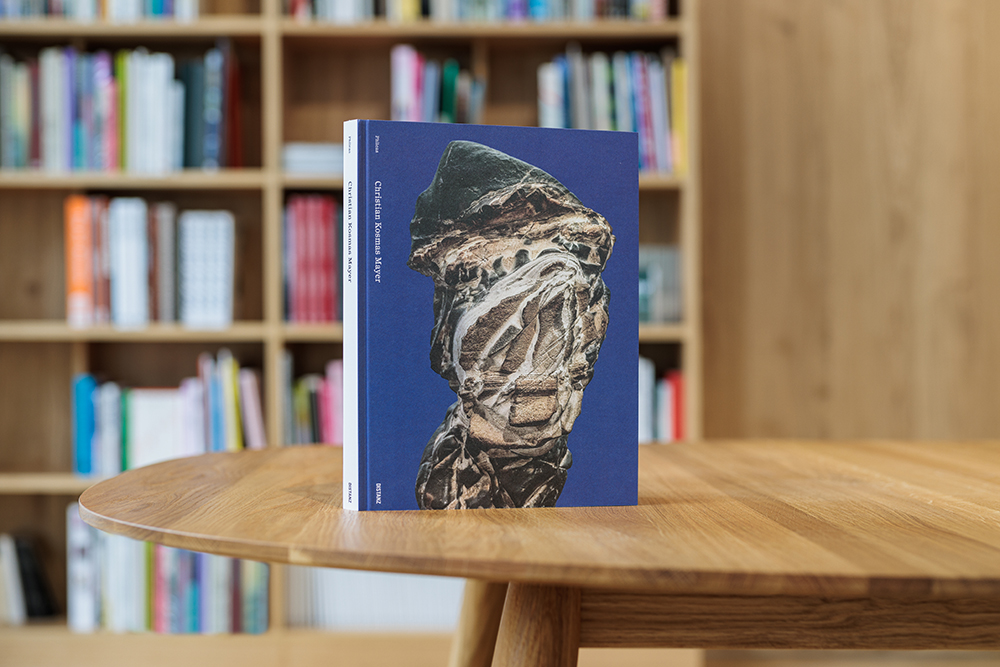First Monograph: Christian Kosmas Mayer is the second addition to the Series of First Monographs initiated by Phileas, the Austrian Office for Contemporary Art. Phileas is an independent organization based in Austria that supports local artists, curators, galleries, and institutions in the field of contemporary art, aiming to enhance Austria’s presence in the global contemporary art scene through various initiatives. This includes forming long-term partnerships with museums and art institutions, providing an exhibition space in Vienna, and the publication of an annual series of artist monographs, and more.
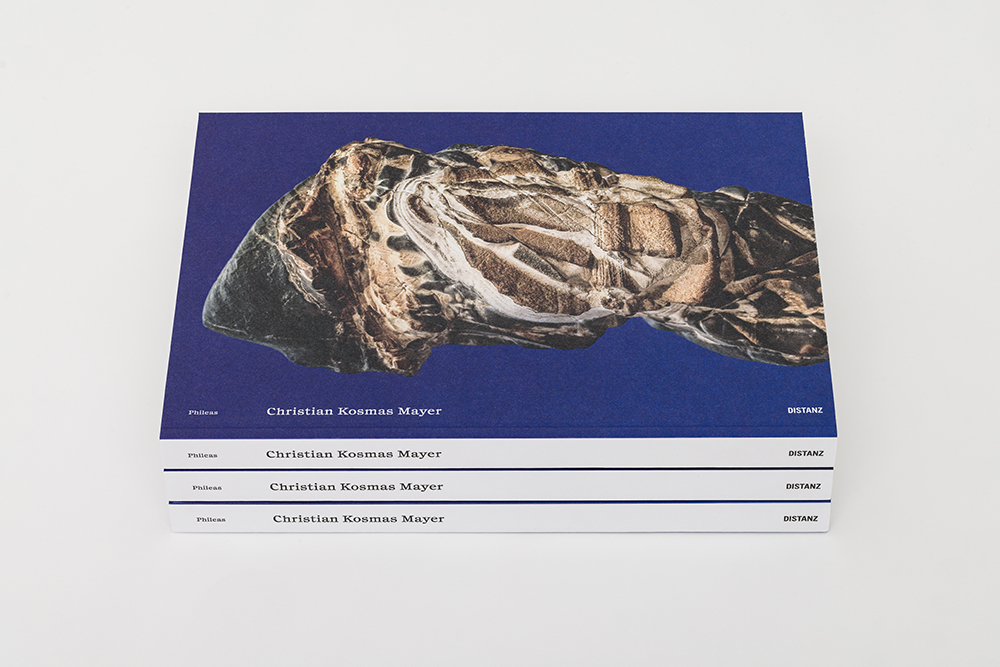 The First Monographs series aims to introduce the work of the most promising Austrian and Austrian-based artists to a wider international audience of art experts and enthusiasts
The First Monographs series aims to introduce the work of the most promising Austrian and Austrian-based artists to a wider international audience of art experts and enthusiasts
The First Monograph: Christian Kosmas Mayer offers the first comprehensive overview of German-born, Vienna-based artist’s practice over the past decade. Christian Kosmas Mayer has developed “a body of work that produces and preserves a constellation of narratives about historical remnants that are often on the verge of disappearance or have already been rendered imperceptible”. The illustrated publication explores both individual works and exhibition projects through commissioned essays by art historians and art professionals around the globe.
The book aims to merge the scientific aspects of Mayer’s work, with his poetic approach. His installations often display a tension between science and myth, the archaic and the hypermodern, the naturally grown and the artificially made.
The First Monographs publication series by Phileas is produced in collaboration with the German publishing house DISTANZ and graphic designer Marie Artaker, whose conceptual approach is based on research and close cooperation with artists, curators, and authors. The designer has won numerous awards, including the “Austria’s Most Beautiful Books” competition, and considers the book a curatorial space.
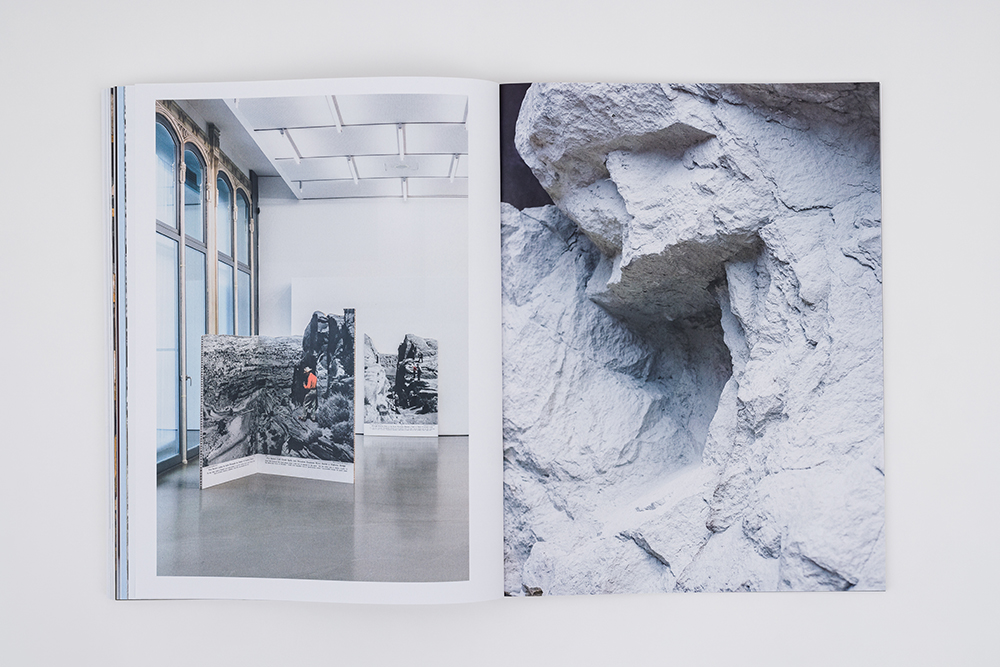
“In order to convey how each project builds up on Mayer’s previous projects, we chose to layer all of his works on top of each other. Through the special semi-translucent paper, the images overlap, and reoccurring concepts, materials, and ideas become more apparent to the reader.”
“The typographic concept in the book has a tabular feel, through its use of lines for the titles and footnotes. While the layout evokes a clean, laboratory-like feel, with a lot of white space. The layout is slightly disturbed through the large page numbers in the quirky font: “Princess Lulu”. Princess Lulu is one issue in the magazine project “ztscprt” published by Mayer and other artists based in Vienna since 2002. Each issue uses a different font and the name of the font gives the respective issue its name.”, Artaker writes about the First Monograph: Christian Kosmas Mayer book.
“The seven texts in the book are followed by image sequences the artist associatively aligned. The different sequences are always introduced with a short poetic title. E.g. “Hard as Water, Soft as Rock” which hints at the similarities between the images of this sequence. “
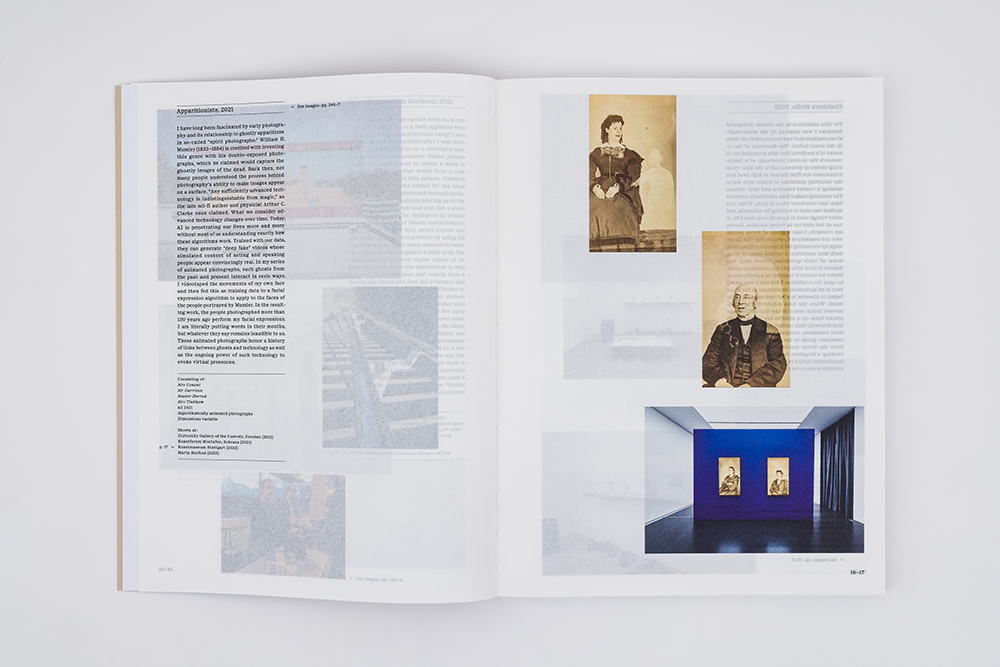 The reader enters the book through notes on the artist’s works written by the artist himself, which are printed on the semi-transparent IBO paper in 60gsm. The notes almost function like a glossary, dedicating one spread to one project. It begins with the most recent project of 2023 and ends with a project conceived in 2002.
The reader enters the book through notes on the artist’s works written by the artist himself, which are printed on the semi-transparent IBO paper in 60gsm. The notes almost function like a glossary, dedicating one spread to one project. It begins with the most recent project of 2023 and ends with a project conceived in 2002.
“In order to convey how each project builds up on Mayer’s previous projects, we chose to layer all of his works on top of each other. Through the special semi-translucent paper, the images overlap, and reoccurring concepts, materials, and ideas become more apparent to the reader.”
The thin scratch-resistant cellophane coating on the cover and light relief coating on top add to the maker’s aim to create a true haptic experience from the moment of holding it in your hands or seeing the small reflections on the relief coating of the stone adorning the cover.
“Mayer purchased the stone/face from a Suiseki dealer in Japan, where there are entire museums dedicated to this ancient ‘art’ of unearthing untouched rocks whose shapes resemble landscaped, animals, or people.” (p. 70 in the book.)

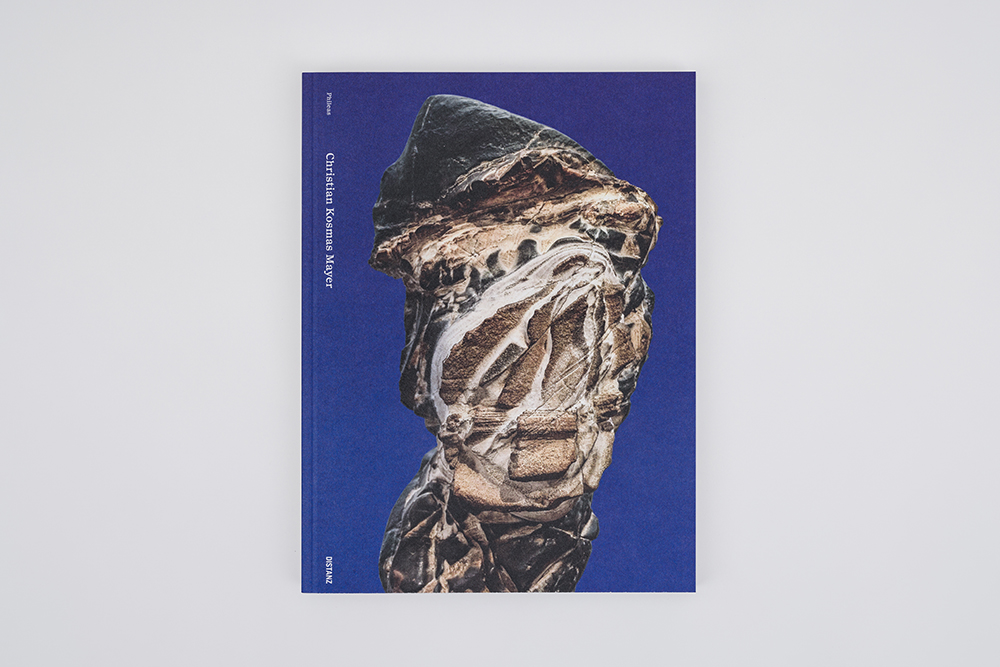
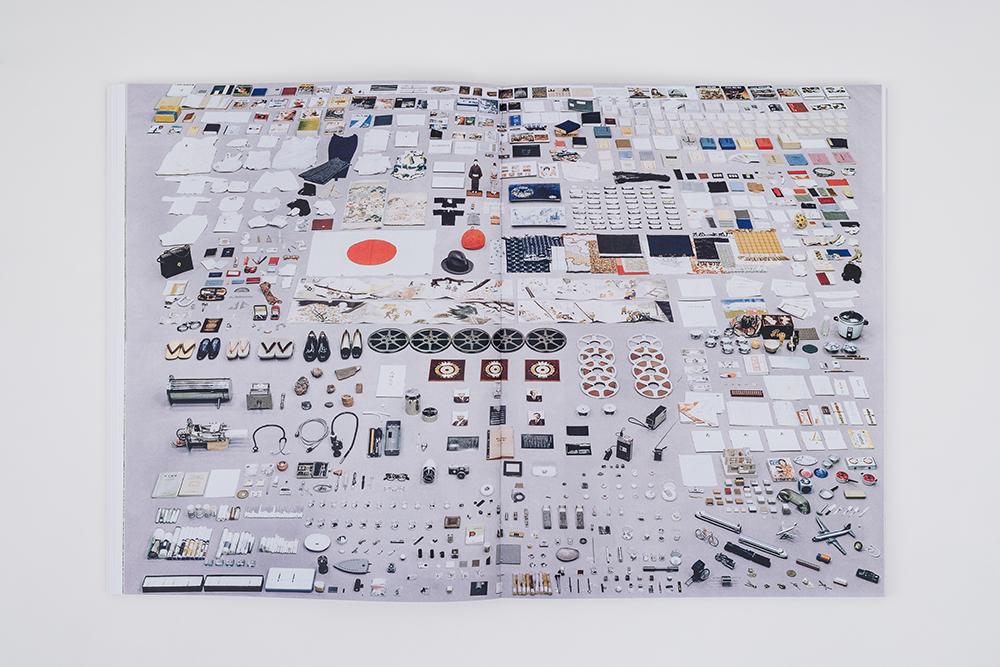
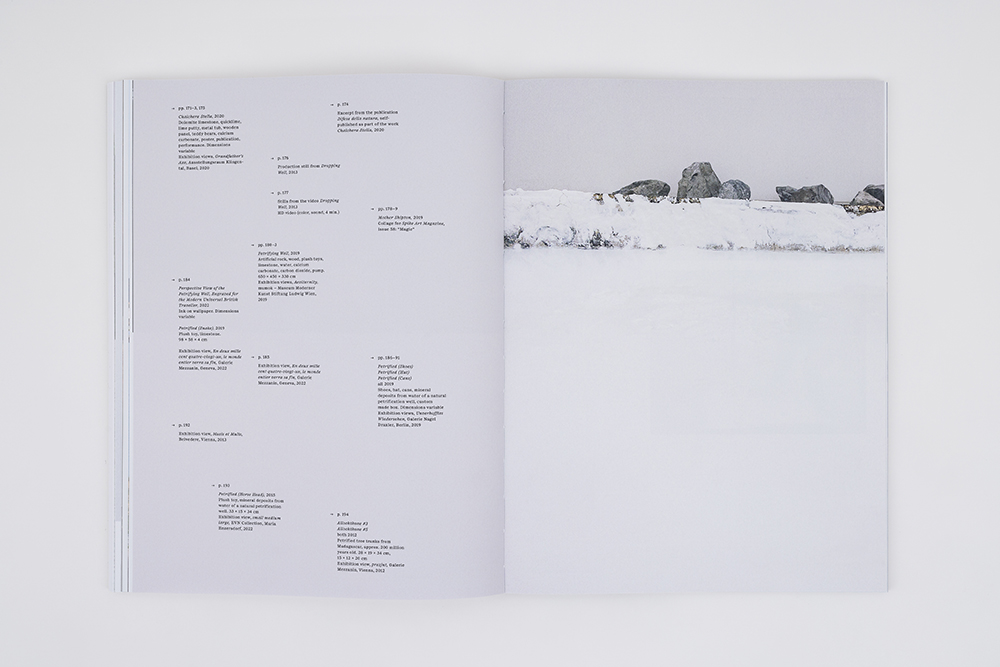


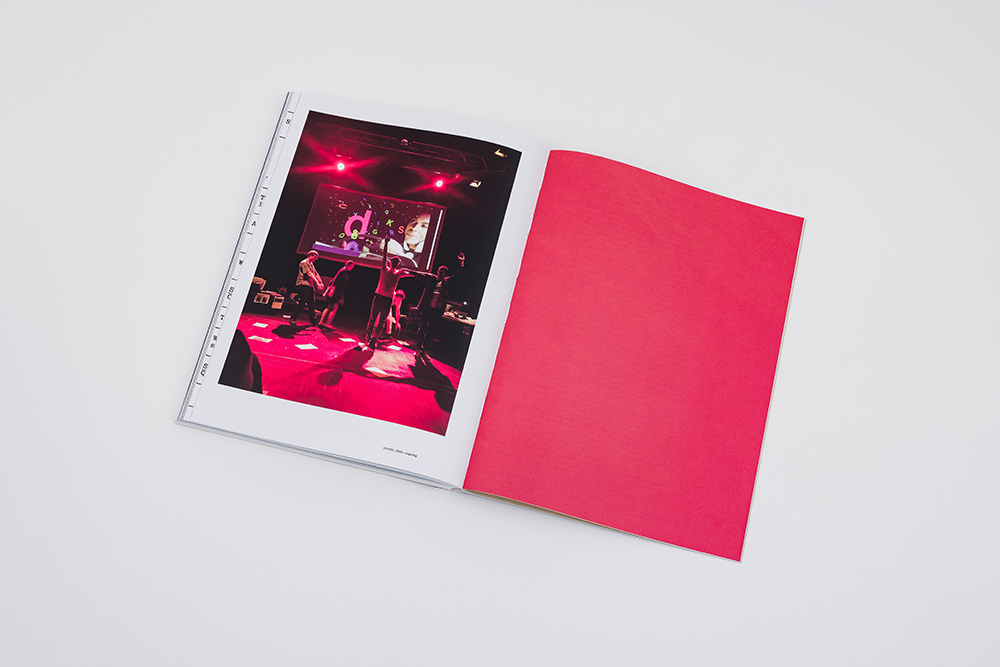
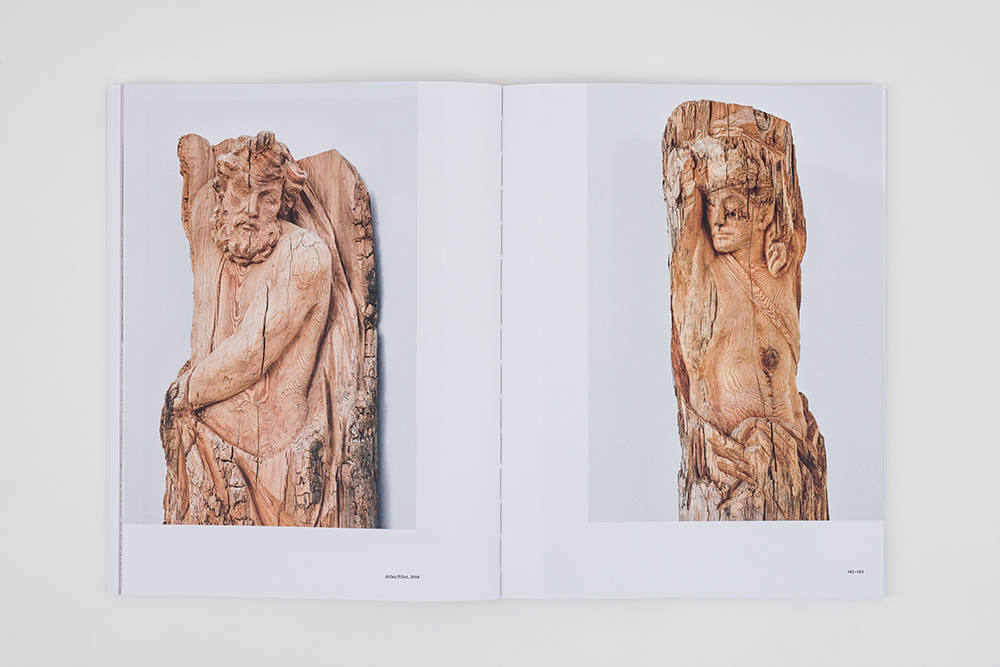
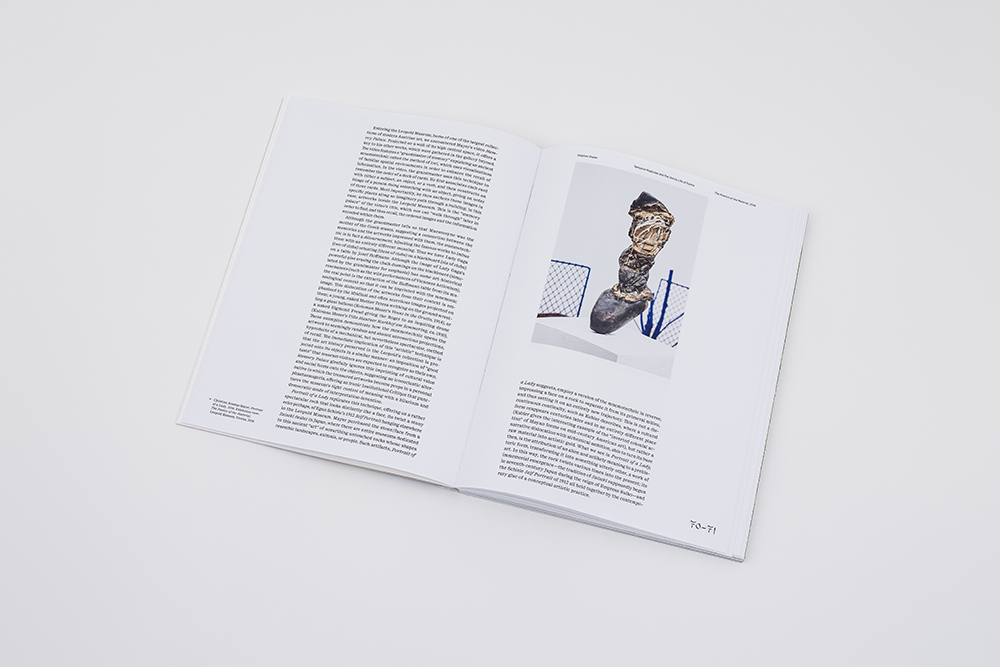
Images © Manuel Carreon Lopez, Kunst Dokumentation

